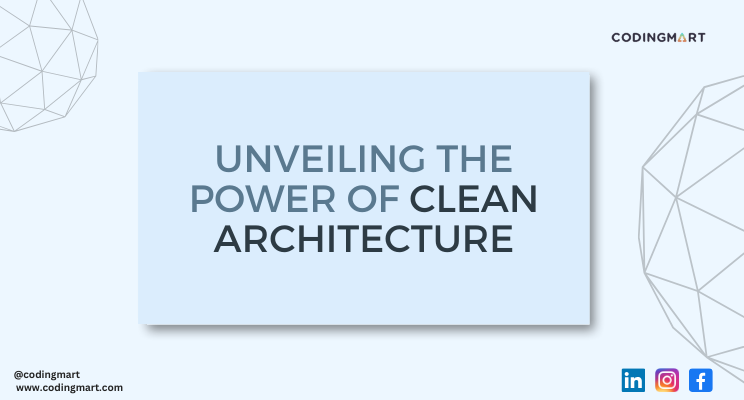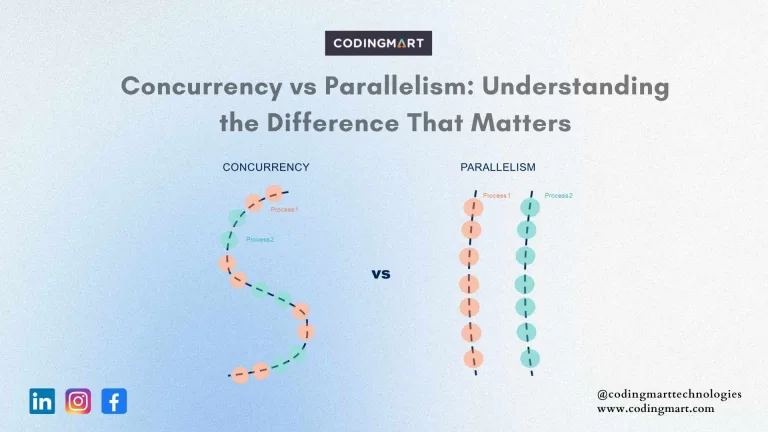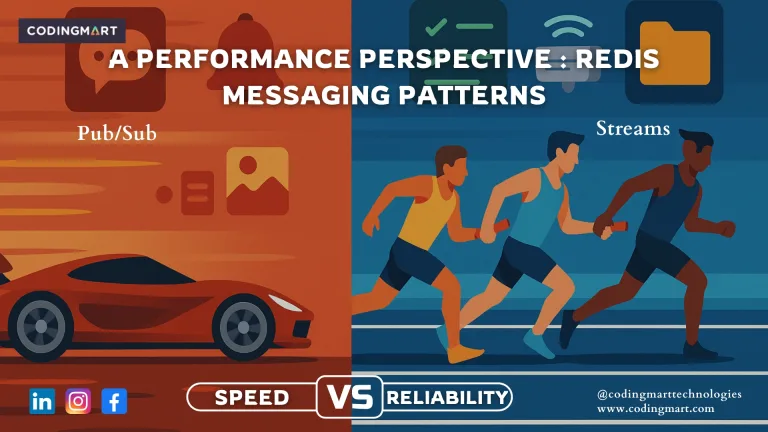blogs
Unveiling the Power of Clean Architecture : Building Strong Foundations for Sustainable Software

Understanding Clean Architecture : A Comprehensive Overview :
Clean Architecture is a software design philosophy introduced by Robert C. Martin, also known as Uncle Bob. At its core, Clean Architecture emphasizes the separation of concerns, modularity, and maintainability. It enables developers to create applications with clear and distinct layers, each with its specific responsibility, making the codebase easy to understand, modify, and extend.
The Key Principles of Clean Architecture
1. Independence of Frameworks: It ensures that the core business logic of an application is not dependent on external frameworks or libraries. This independence allows for flexibility and easy adaptation to changing technologies.
2. Testability: By keeping external concerns at the periphery, they promotes thorough testing of the application’s core logic. This leads to the development of reliable and bug-free software.
3. SOLID Principles: They incorporates SOLID principles (Single Responsibility, Open/Closed, Liskov Substitution, Interface Segregation, and Dependency Inversion), guiding developers in writing clean, maintainable, and scalable code.
4. Clear Separation of Concerns: The architecture separates the application into layers, ensuring a clear distinction between business rules and external components like databases, user interfaces, and frameworks.
Let’s delve deeper into these layers:
1. Entities:
Entities encapsulate enterprise-wide business rules and data. They are the heart of the business application and contain enterprise-specific business rules. These entities are usually the objects that are persisted by your database and have application-independent lifecycle.
2. Use Cases:
Use Cases contain application-specific business rules. They orchestrate the flow of data to and from the entities and direct those entities to use their enterprise-wide business rules to achieve the goals of the use case. Use Cases do not depend on the data, the database, external interfaces, or the framework you’re using.
3. Interface Adapters:
Interface Adapters convert data from the format most convenient for the use cases and entities to the format most convenient for some external agency, such as the database or the web. They encompass presenters and controllers for the user interface, gateways, presenters, and data mappers.
4. Frameworks and Drivers:
Frameworks and Drivers are the outermost layer and are where all the details go. They are specific to the web, databases, the UI, etc. These details are volatile and can change rapidly, so they are kept separate from the stable and business-essential code inside the inner layers.
Benefits of Clean Architecture
1. Maintainability: They makes it easier to modify or extend the system without affecting the entire codebase. Developers can update specific components without worrying about disrupting other parts of the application.
2. Scalability: The modular nature of Clean Architecture allows for the seamless addition of new features or functionalities. It accommodates growth and expansion without causing the system to become overly complex.
3. Readability and Collaboration: They leads to readable and understandable code. This clarity fosters collaboration among developers, making it simpler for teams to work together efficiently.
4. Reduced Technical Debt: By following best practices and principles, it helps in reducing technical debt. Clean, well-organized code is easier to maintain, reducing the likelihood of future problems.
Implementing Clean Architecture in Real-world Projects
The implementation of Clean Architecture involves careful planning and adherence to best practices. It requires developers to have a deep understanding of the business domain and to continuously refactor the codebase to maintain its integrity.
1. Domain-Driven Design (DDD): They often goes hand-in-hand with DDD, enabling developers to model the software based on the real-world business domain. This approach ensures that the software aligns closely with the business requirements.
2. Use of Design Patterns: Clean Architecture benefits greatly from the use of design patterns like Factory, Repository, and Observer. These patterns provide proven solutions to common problems, enhancing the architecture’s robustness.
3. Continuous Learning and Adaptation: Technology is ever-changing, and so are the best practices in software development. Staying updated with the latest trends, tools, and methodologies is essential for successfully implementing clean architecture in modern projects.
Conclusion
It is not just a theoretical concept; it’s a practical approach to software development that can transform the way we build applications. By embracing clean architecture principles, we can create software systems that are not only functional and efficient but also adaptable and sustainable in the face of evolving technologies and business requirements.
Thank you for joining us in exploring the world of clean architecture. We hope this newsletter has provided valuable insights into the importance of building strong foundations for our software projects. As always, we encourage you to share your thoughts, experiences, and questions in the comments section.
Stay tuned for our next edition, where we will delve into another exciting topic shaping the future of technology.


